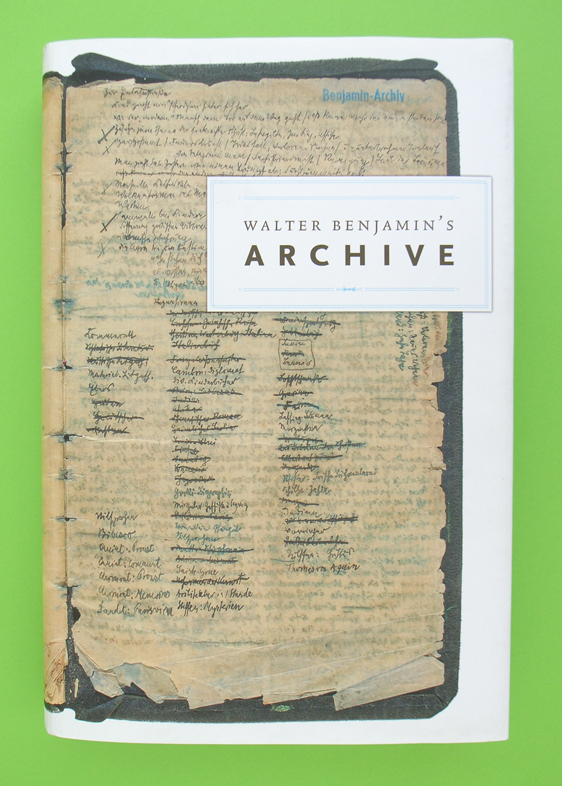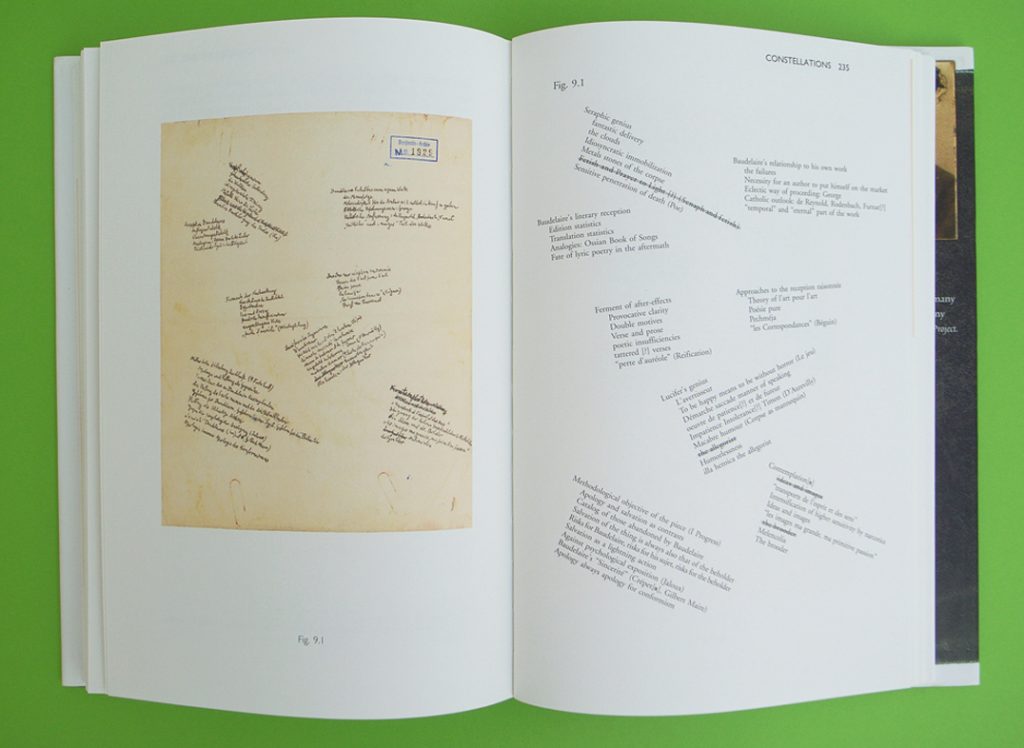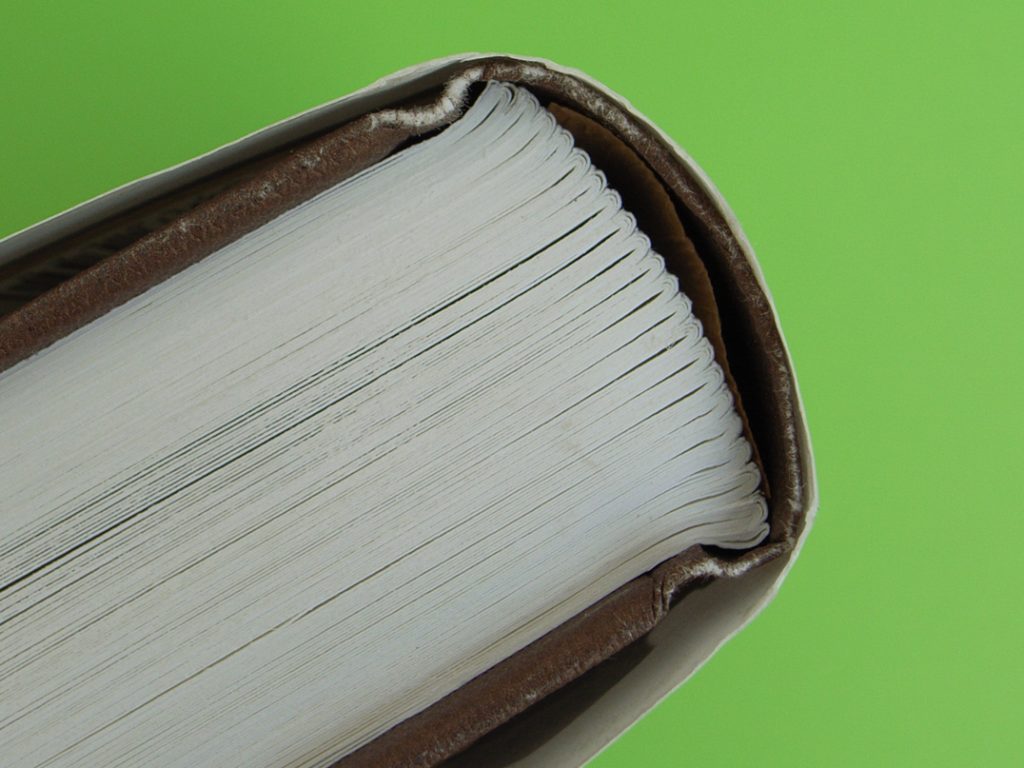Now that every word that Walter Benjamin published in his lifetime has been collected and republished, and now that his many unfinished words have been similarly collected and printed, and now that to this set of ‘collected writings’ we can add letters and diaries that he cannot have thought of publishing, there only remains to be transcribed and multiplied the scraps, cards, sheets, that fill up the rest of his archive.

Walter Benjamin’s archive is an English-language edition of the German book Walter Benjamins Archive (published by Suhrkamp in 2006, it is not included in their website, though it does show up in the German internet shops). In both languages this title is a little ambiguous. Its main meaning is not ‘items from the Benjamin archives’, but rather the small collections that Benjamin himself put together in his lifetime, and which he annotated and maintained. The editors divide their book into thirteen chapters. Apparently this is one for each of these collections, but among the thirteen chapters are wider surveys of ‘Benjamin as archivist’, ‘Collecting and dispersal’, and ‘Micographies’ (Benjamin’s feats of tiny writing). The chapters on Benjamin’s archives include considerations of his Russian toy collection, the listing of his son’s words, his travel postcards, and so on. Erdmut Wizisla, one of the editors, points to the Benjaminian pleasure in this number (‘Thirteen – it was a cruel pleasure to stop at this number’, WB quoting Proust). And one realizes that this book isn’t any kind of systematic work, but rather another, sometimes fascinating, sometimes tantalizing glimpse into the world of Walter Benjamin.
The book’s virtues are those of sticking to the documents and not labouring interpretation; its frustrations are that the documents tend not to be given whole. Often only one page of an item may be reproduced; sometimes the transcription breaks off there, sometimes more is transcribed than is shown in facsimile. One understands that without such drastic selectivity a compact book on this topic couldn’t be brought to the market; but one supposes that this ought to be acknowledged by these otherwise conscientious editors. So it’s another ‘bits and pieces brought up from the archive book’, a category in which we are proud to put Anthony Froshaug.

The documents are shown on left pages, and the text is transcribed on facing right pages. Though the editorial standard of this work is high, and the colour reproductions of the documents seem really successful, it is – at least in Verso’s Anglo-American edition – without the meticulous fidelity and typographic consciousness of the editors at the Institut für Textkritik, on which we briefly reported here.
The editors (both Verso’s and, one supposes, Suhrkamp’s) don’t go the whole way in transcribing the text, and short-cuts are taken. They provide a note about this at the end, but it doesn’t seem to cover all that happens. For example, in some of the ‘micographies’ the crossed-through words are sometimes just omitted in transcription; elsewhere the manuscript striking-through is faithfully represented in the typeset transcription.
The Verso editor has, unnecessarily, introduced a new problem. Where Benjamin puts book titles in quotation marks or underlines words, in the English-language edition the liberty is sometimes taken of using italics for these words; sometimes not. In one instance Benjamin writes some French and this is put into italics, following the convention of ‘foreign words in italics’. These ‘liberties’ are an awful lapse in truth and consistency. Further, typographers will be immediately upset by the machine-sloped letters that are used for italic text, which must be the result of innocence and ignorance rather than a conscious choice. And overall it seems a pity that the book uses weak (but it’s always weak in digital versions) Bembo and a poorly set and spaced Gill Sans Light.
A further sign of sloppy work at Verso is the inconsistency of treatment of book titles in the editorial matter. German-language titles are generally put into English, whether or not any English-language edition was ever published. One might argue that when an English-language edition has been published, it is sensible enough to refer to that book (generally) with that English-language title. This view begins to weaken now that one of Benjamin’s most celebrated texts, ‘The work of art in the age of mechanical reproduction’, has been republished in a more faithful version as ‘The work of art in the age of its technical reproducibility’. As noticed previously, it is a brutal and unnecessary cleansing that introduces to the world for the first time, years after their real referents existed, publications such as South West German Radio Gazette. Yet, for some reason, French-language titles are usually left in French (we find Recherche du temps perdu). It’s as if Verso thinks that we can’t deal with the occasional German proper name, but can manage the more familiar French.
Without seeing the German edition, one can know something about its qualities if one turns to the catalogue of the best-designed German books from 2006, included in this discussion. The main designer of this book is revealed to be Friedrich Forssman, an expert and subtle practitioner of complex-text typography, and co-author of the book Detailtypografie. That is already enough to explain why the pictures in the Verso edition are so good; and why the text typography is so dodgy. The scans and photographs would have been supervised by Forssman, and could then be bought directly by Verso. But there was no Forssman around in London or New York to take care of typeface selection, hyphenation and justification, and the rest.
There is a small but revealing sign of the crassest publishing practice in the description of the author on the back flap of the Verso jacket: ‘Walter Benjamin was born in Berlin, Germany in 1892 and died in Spain in 1940. His many books include Illuminations and The Arcades Project.’ I suppose it may be good to know that it was the Berlin in Germany in which Walter Benjamin came into this world, and not the Berlin in Wisconsin, nor yet the Berlin in New Hampshire. Died in Spain? Yes, Port Bou is just in Spain; but there is some sense in this CV that just as he spent his childhood in Berlin, Germany, he spent his later years in Spain (maybe in Madrid, the capital of Spain?). These two of his ‘many books’ named by the Verso editorial person were not known to Benjamin. It’s a shame that the CV-writer doesn’t say that, after the isolated introductory collection Illuminations (published first in 1968 in New York, under the inspiration of Hannah Arendt), it was Verso – in its first form of New Left Books – who through the 1970s put Benjamin into English. (The task of publishing Benjamin in English is now in the hands of Harvard University Press.) In sum, this is a CV template that could fit a professor of politics at the LSE or Columbia University, but which clearly can’t deal with this man of fragments: travel, exile, high philosophical speculation, jobbing journalism.
Finally, in purely book-production terms, the high point of the Anglo-American edition, apart from the colour reproduction and printing, is its sewn binding. As with another recent Verso book discussed here, these things are the work of the Tien Wah Press in Singapore. Here again one sees (an extraordinary sight in Anglo-American publishing) sewn sections of 16-pages, cold-glued. The ‘rounding and backing’ of the sections in the copy I’ve been reading shows an instructive imperfection. The ideal of a rounded spine achieved through unbent, or only very slightly bent, sections isn’t quite reached, and some of the sections show an ‘as if bashed with a hammer’ kink in the sections. Look at the central sections of the book at the top of the spine, here:

and contrast the unbashed sections at the base of the spine:

Update (13.12.2008), see now this for more on the history of Benjamin in the English language.
Robin Kinross